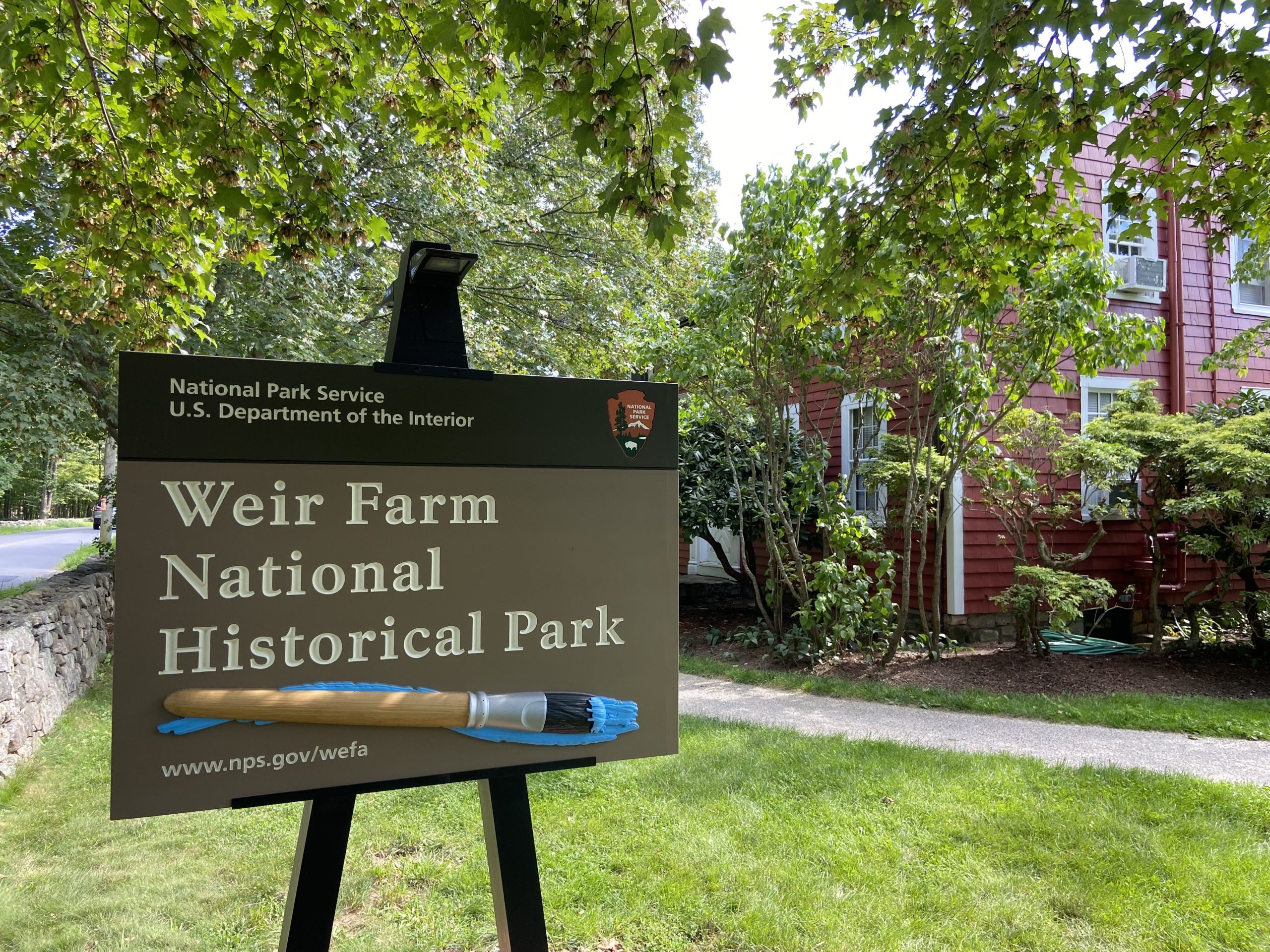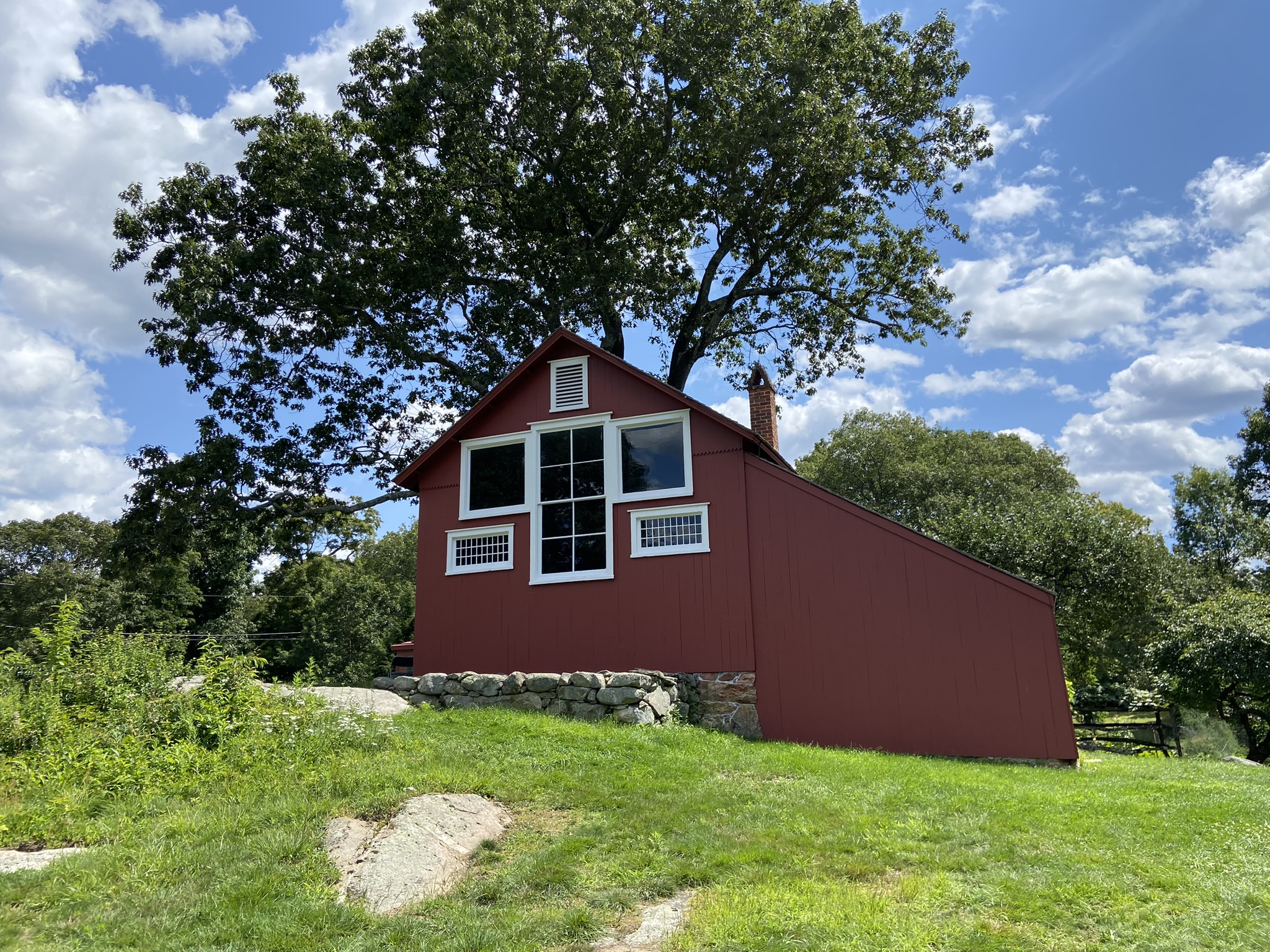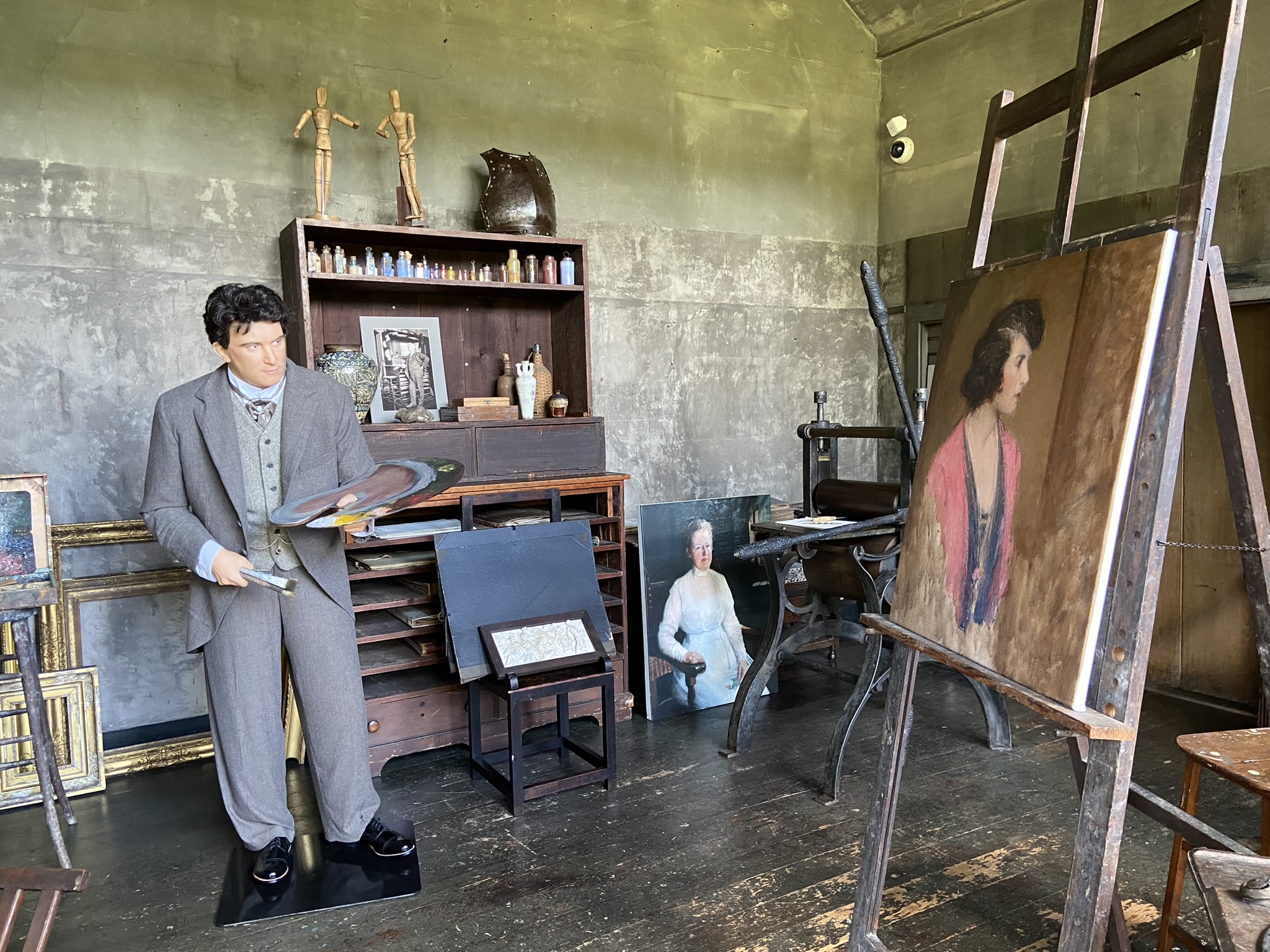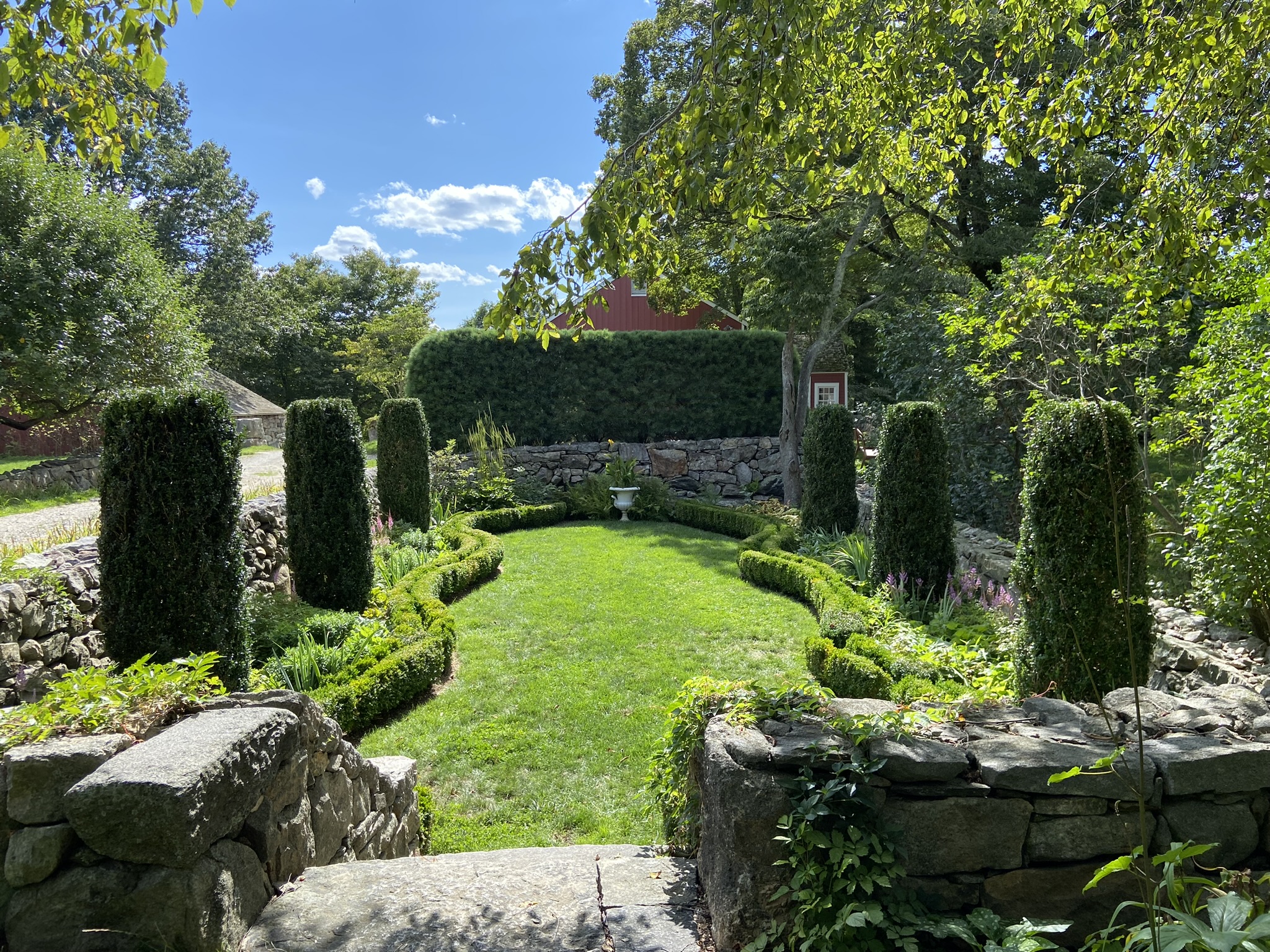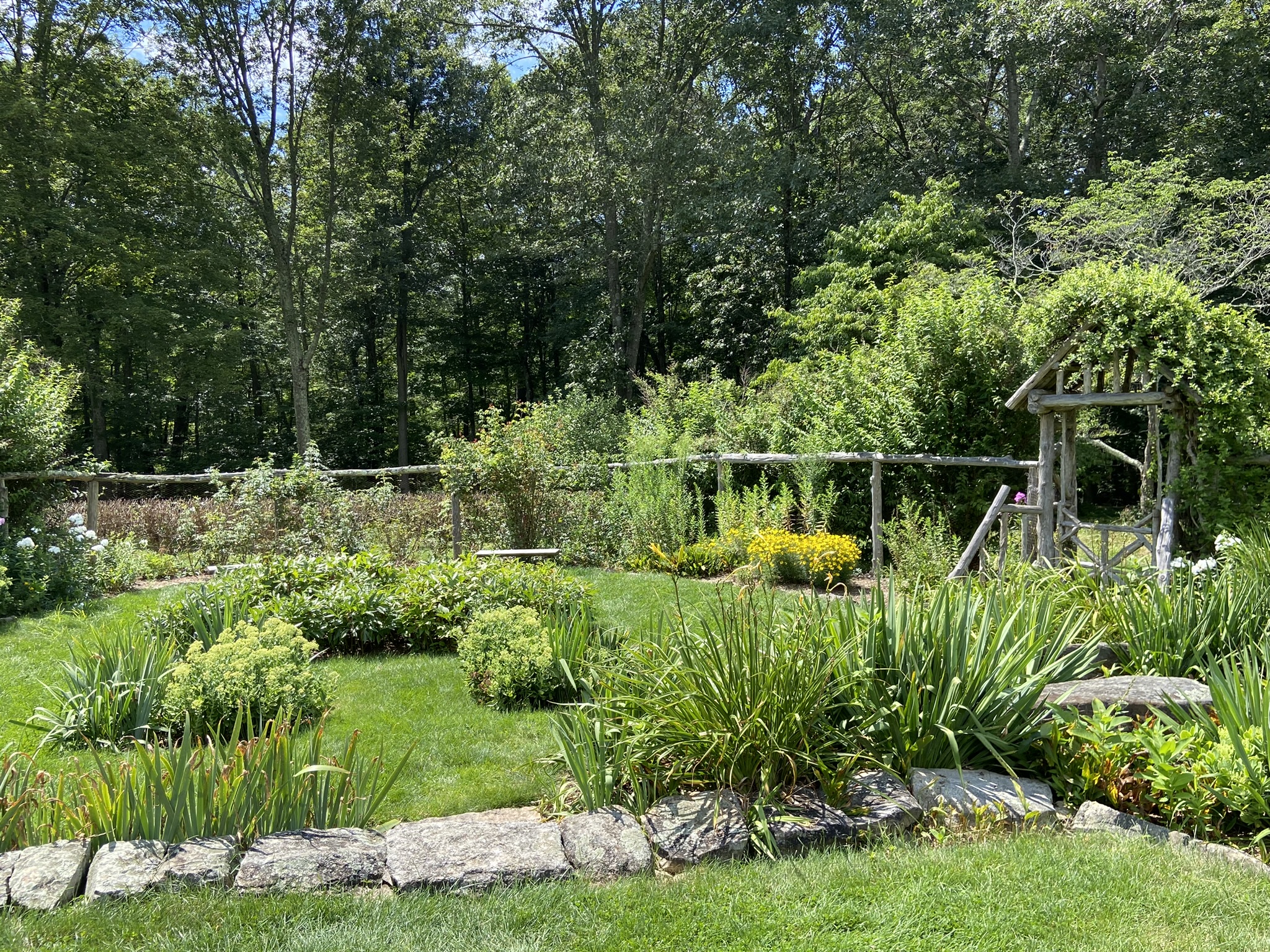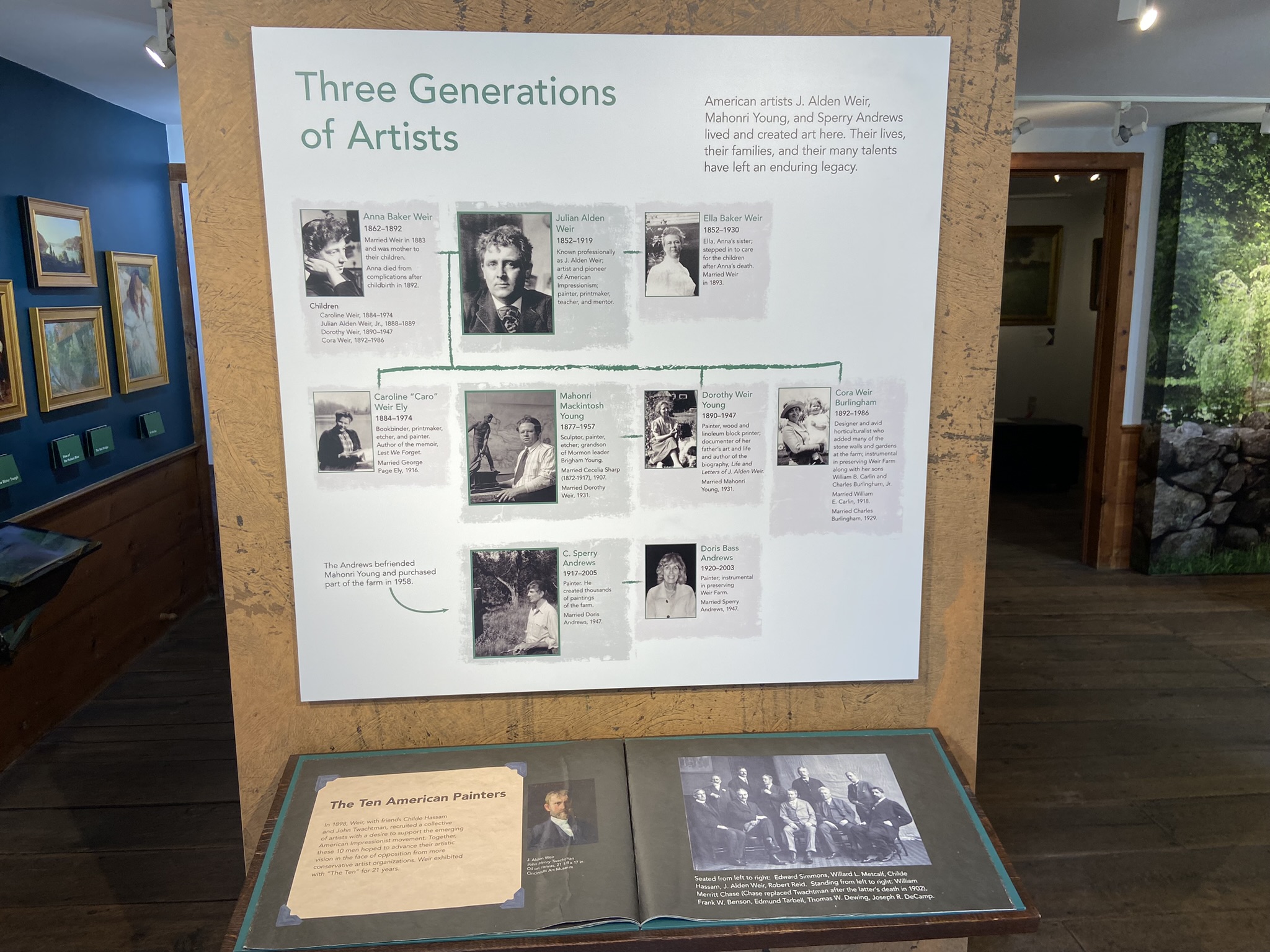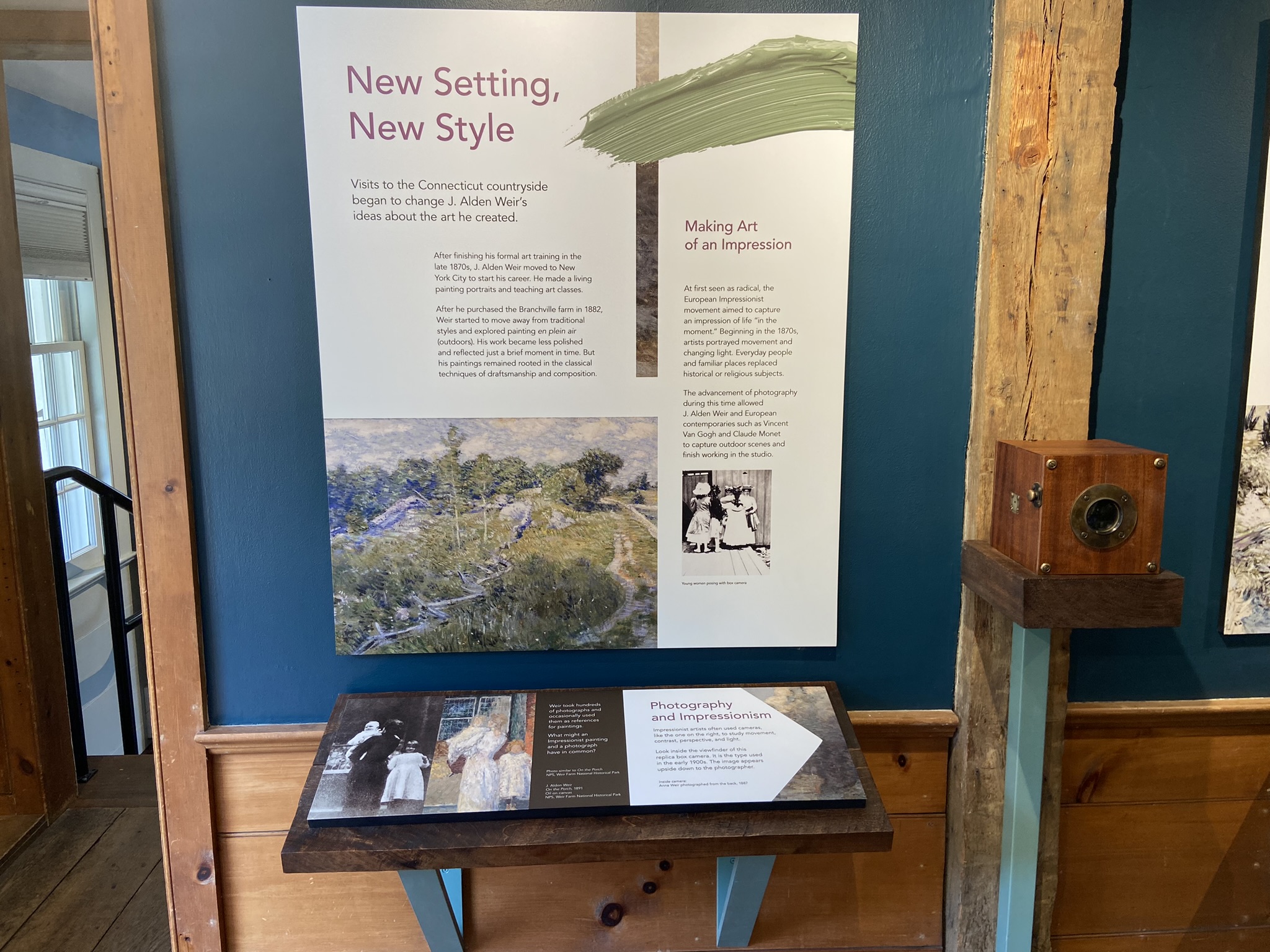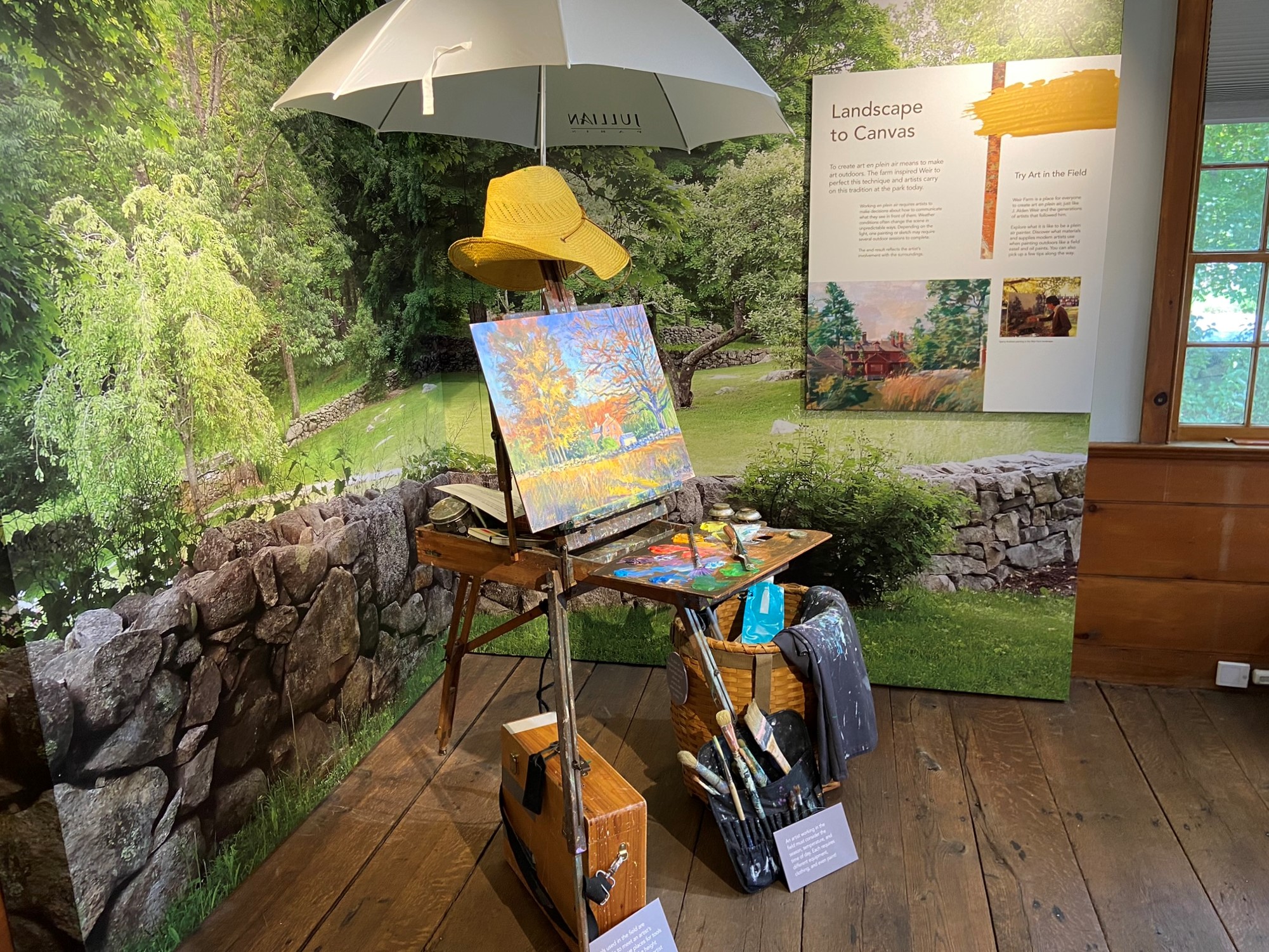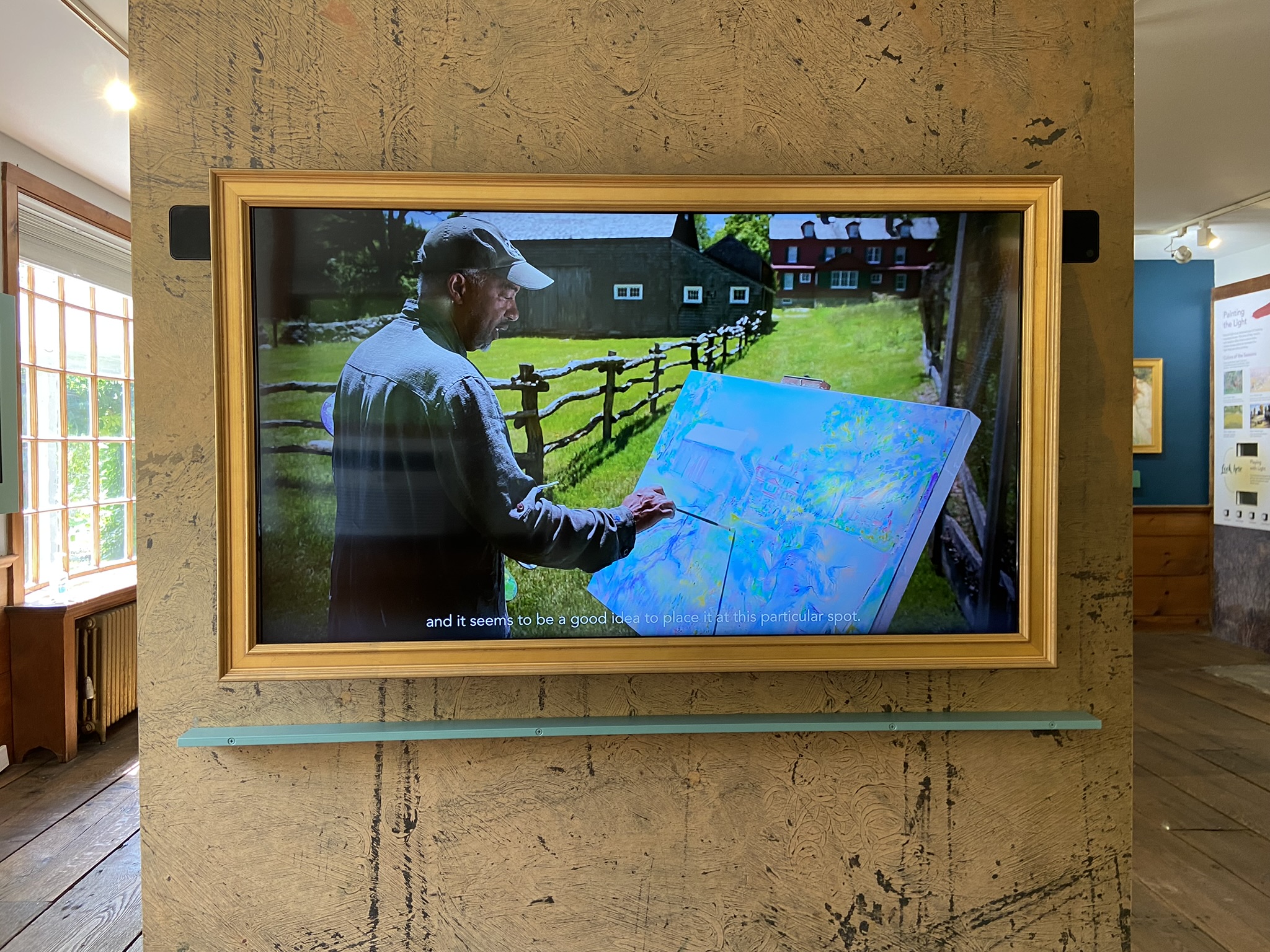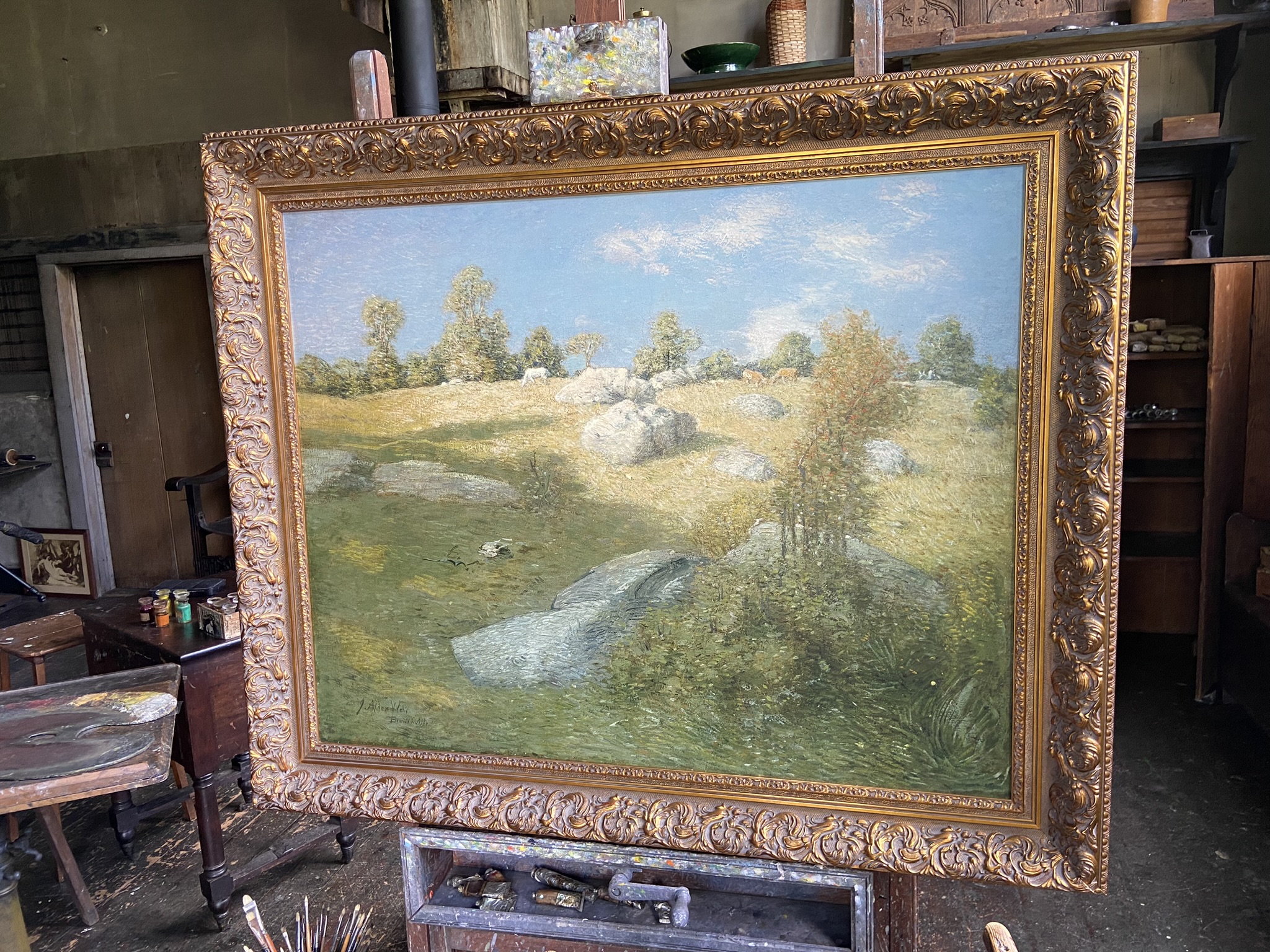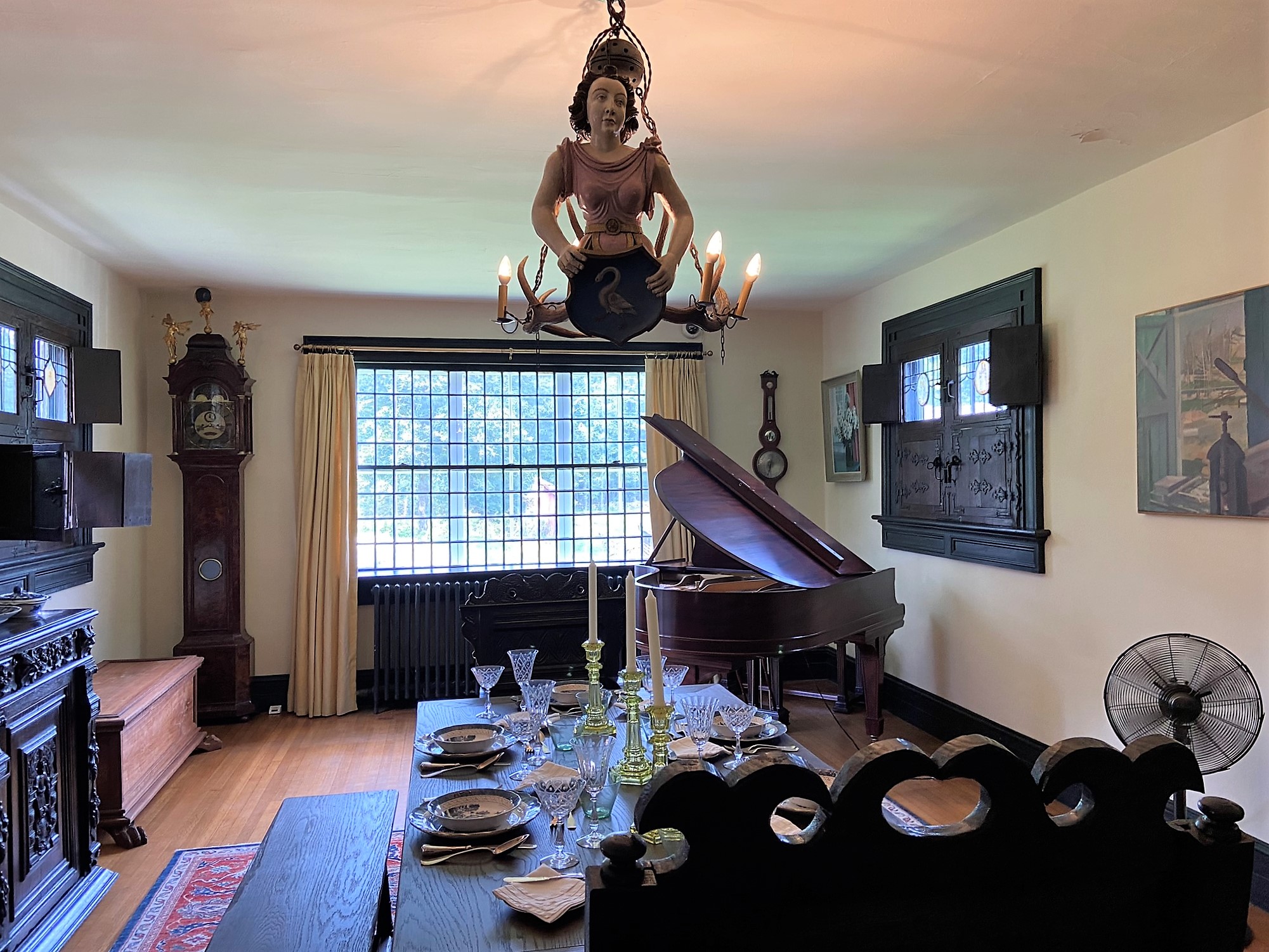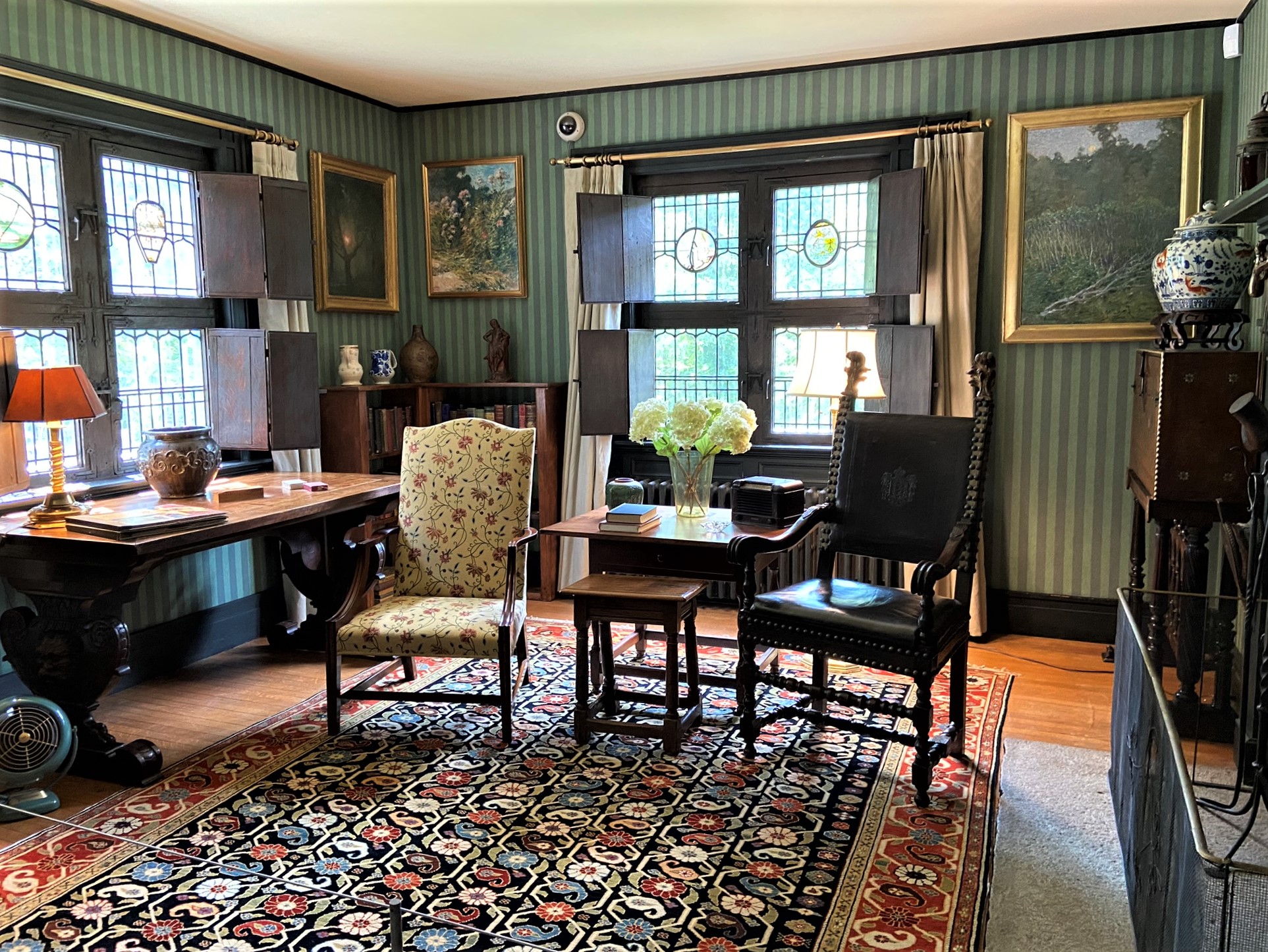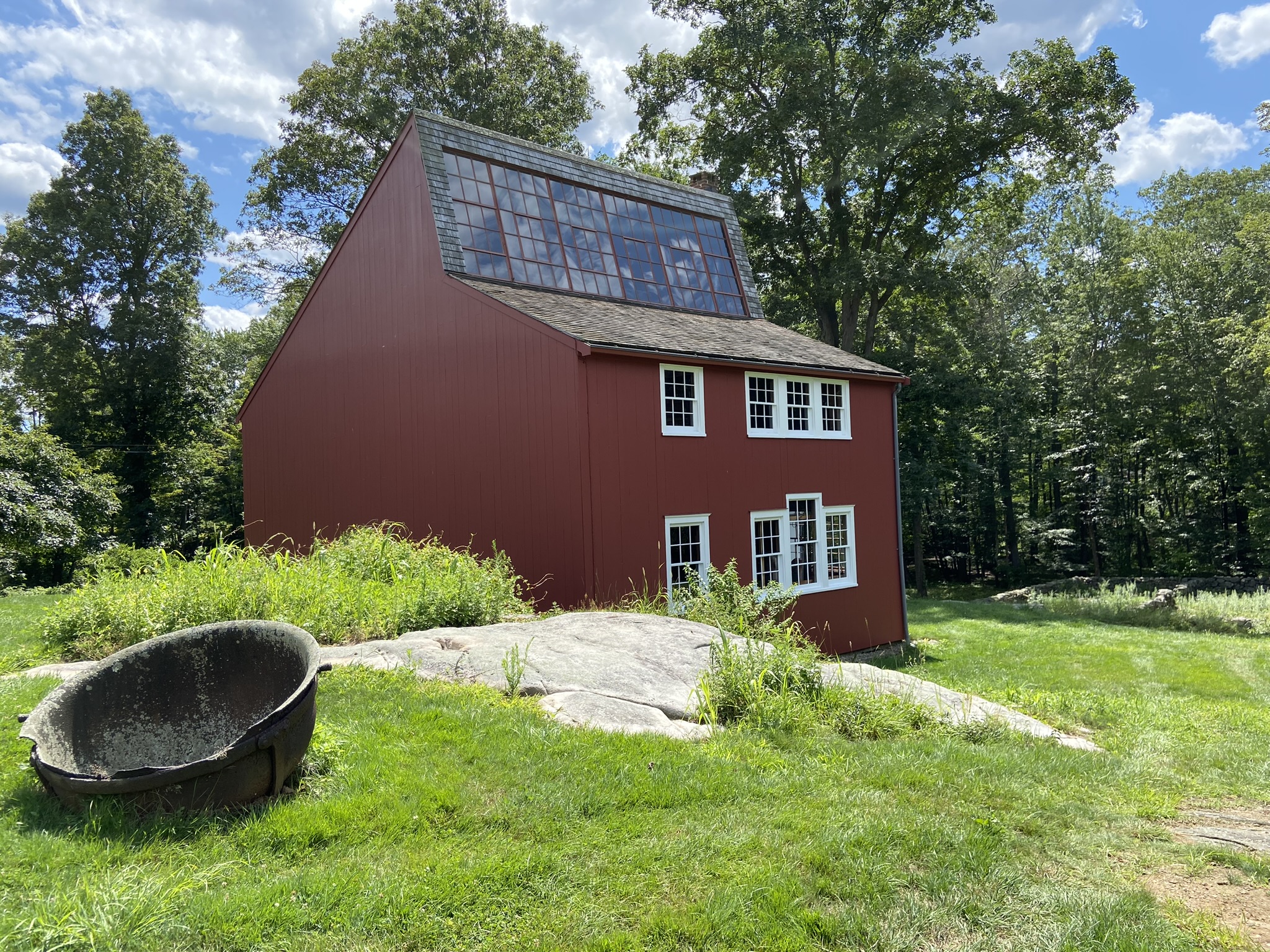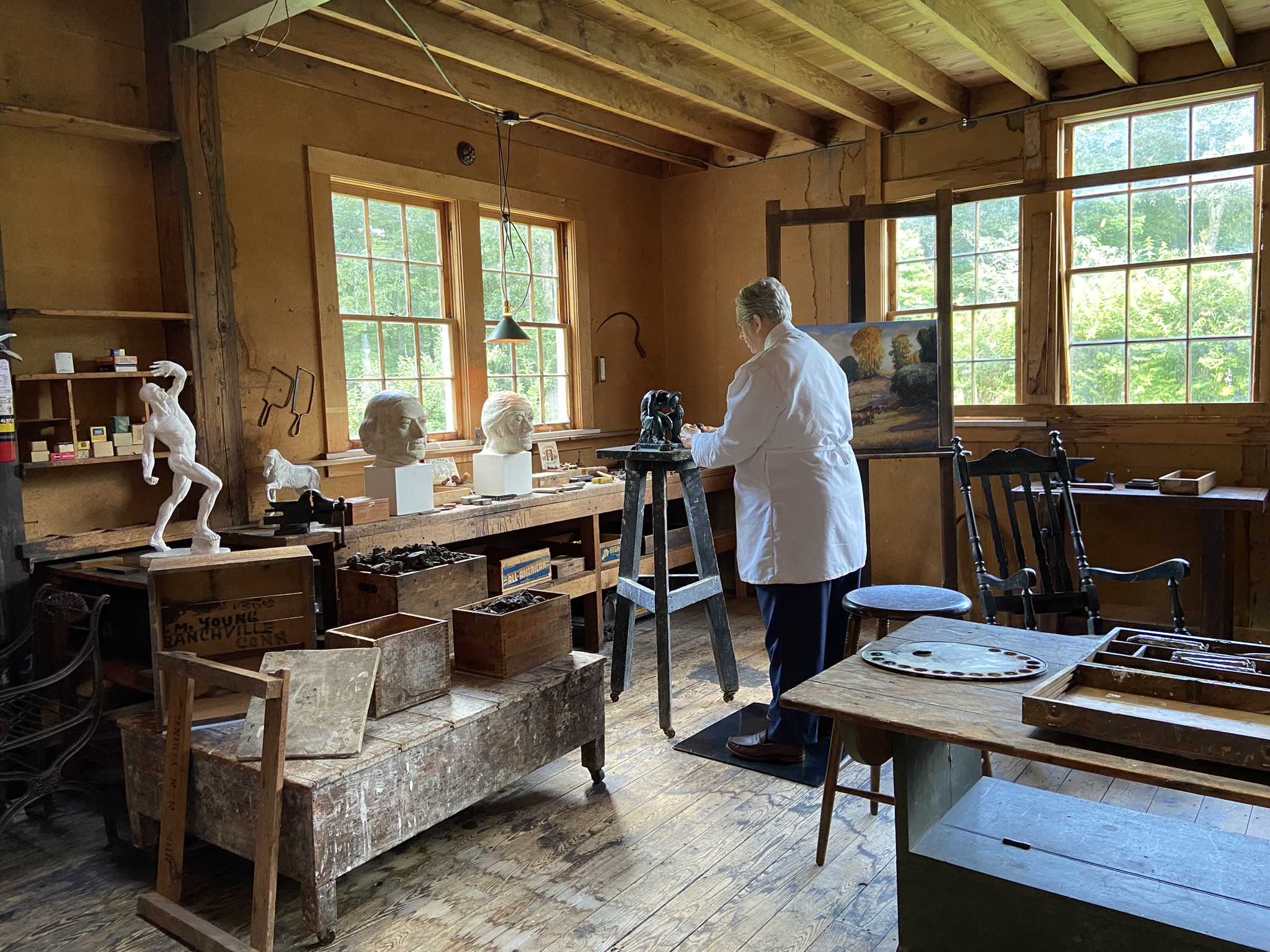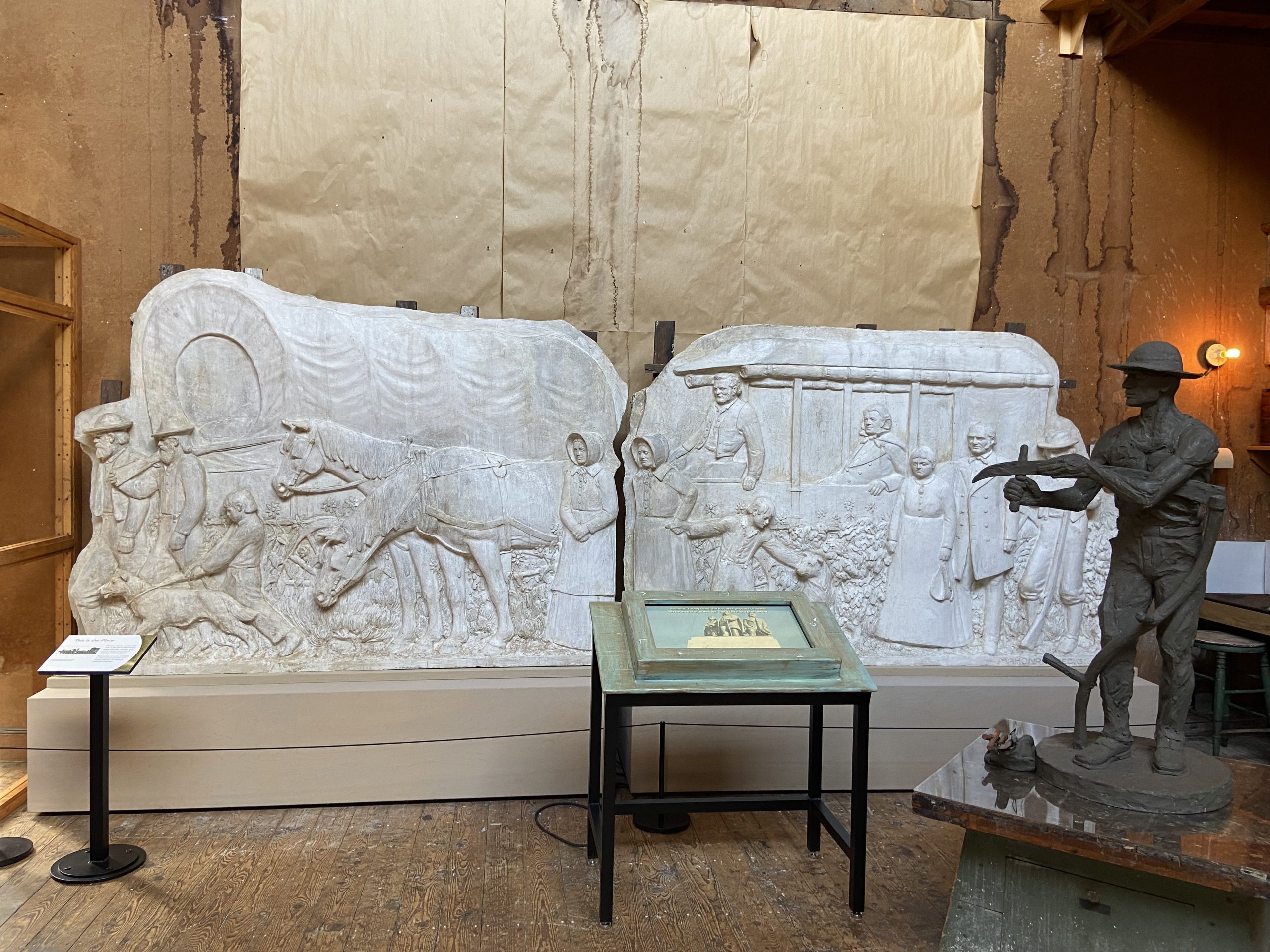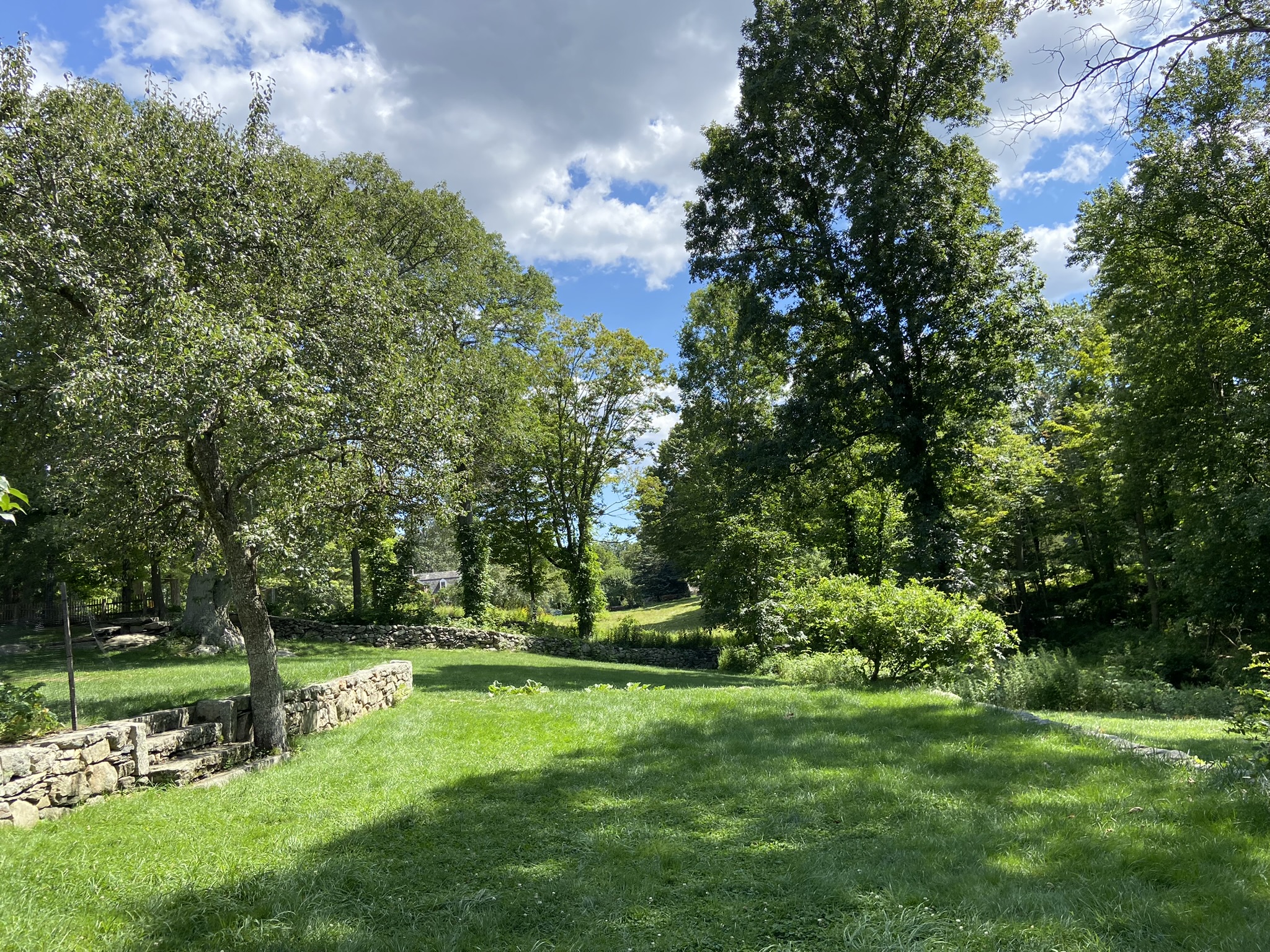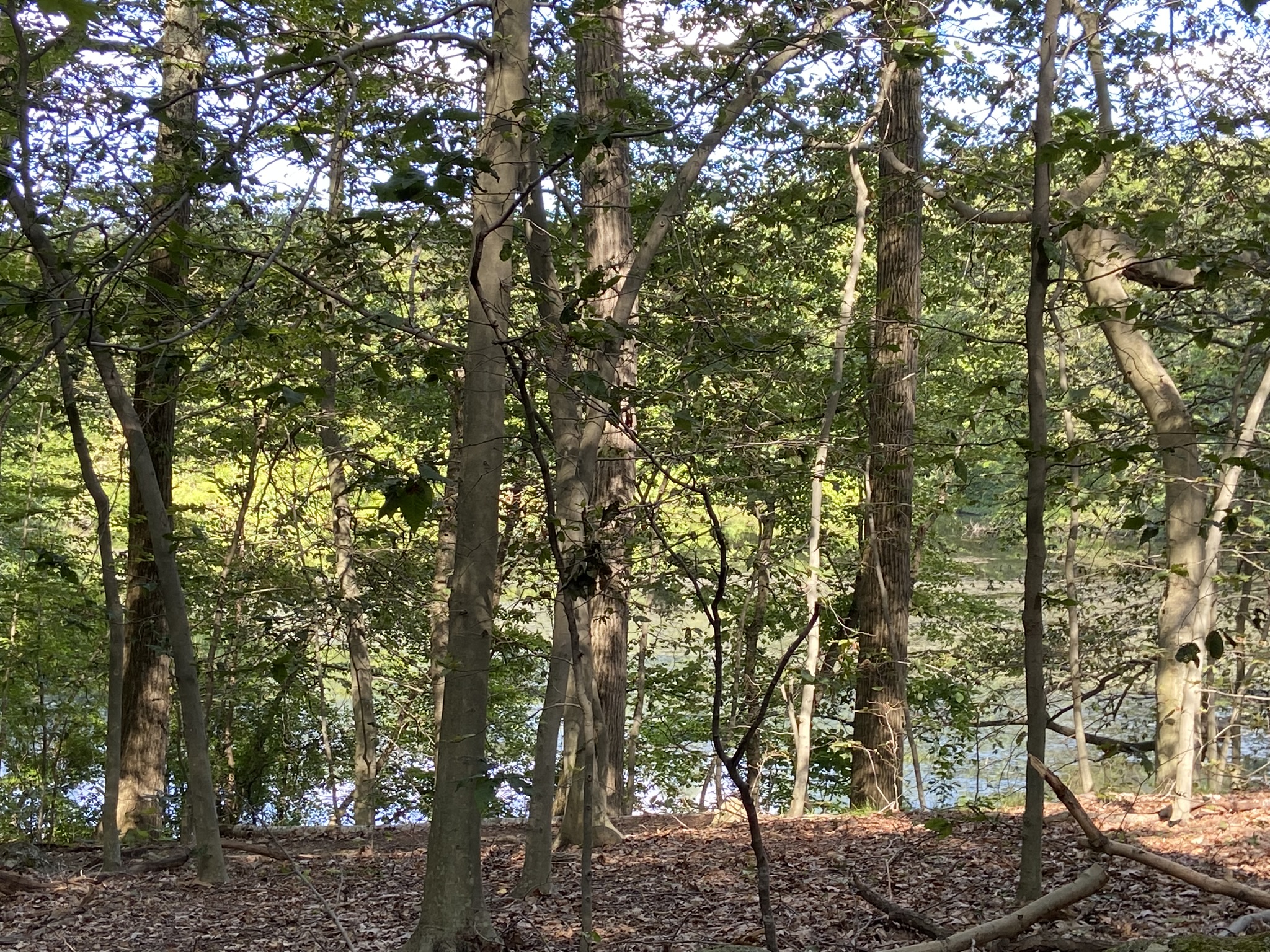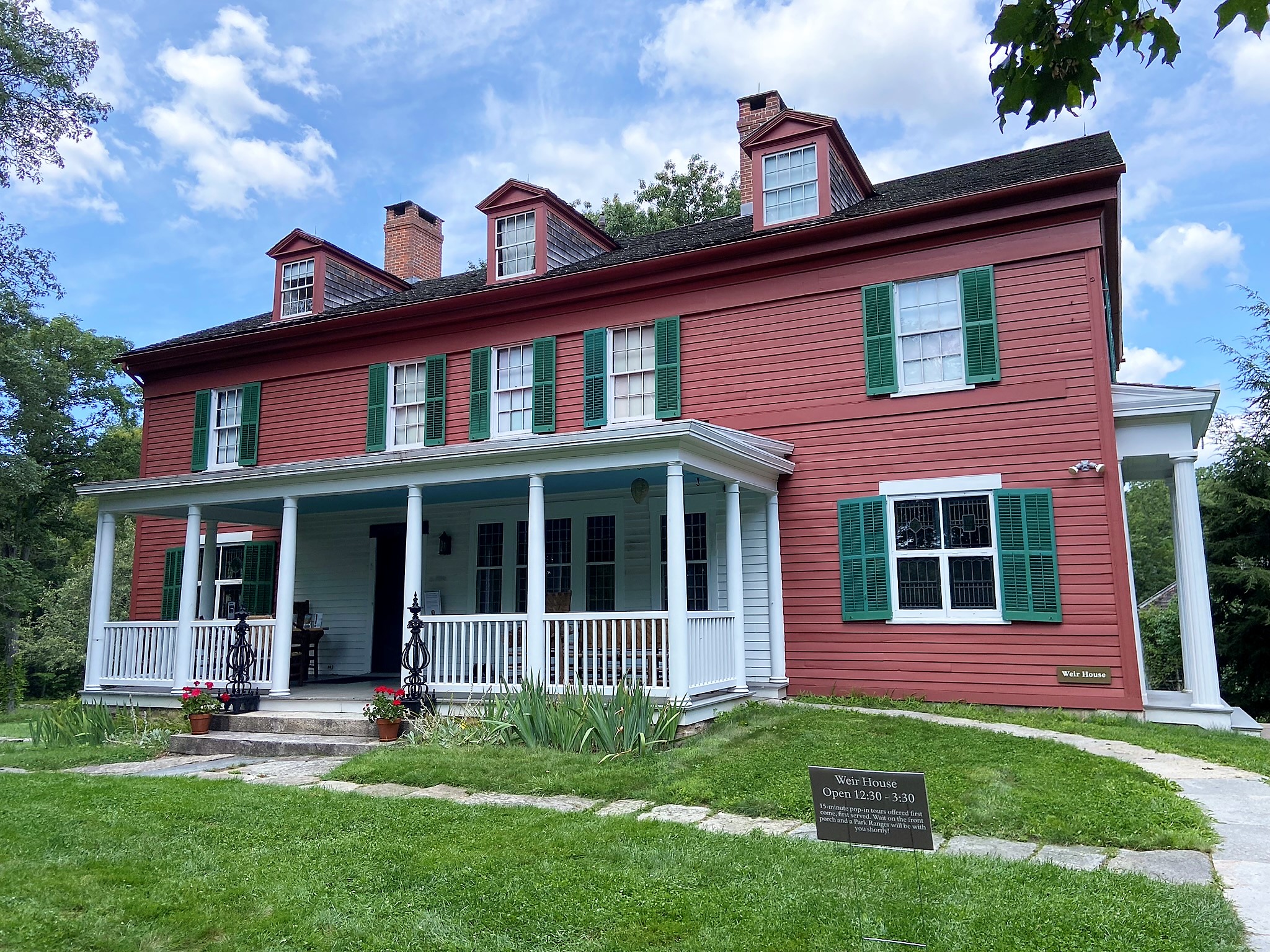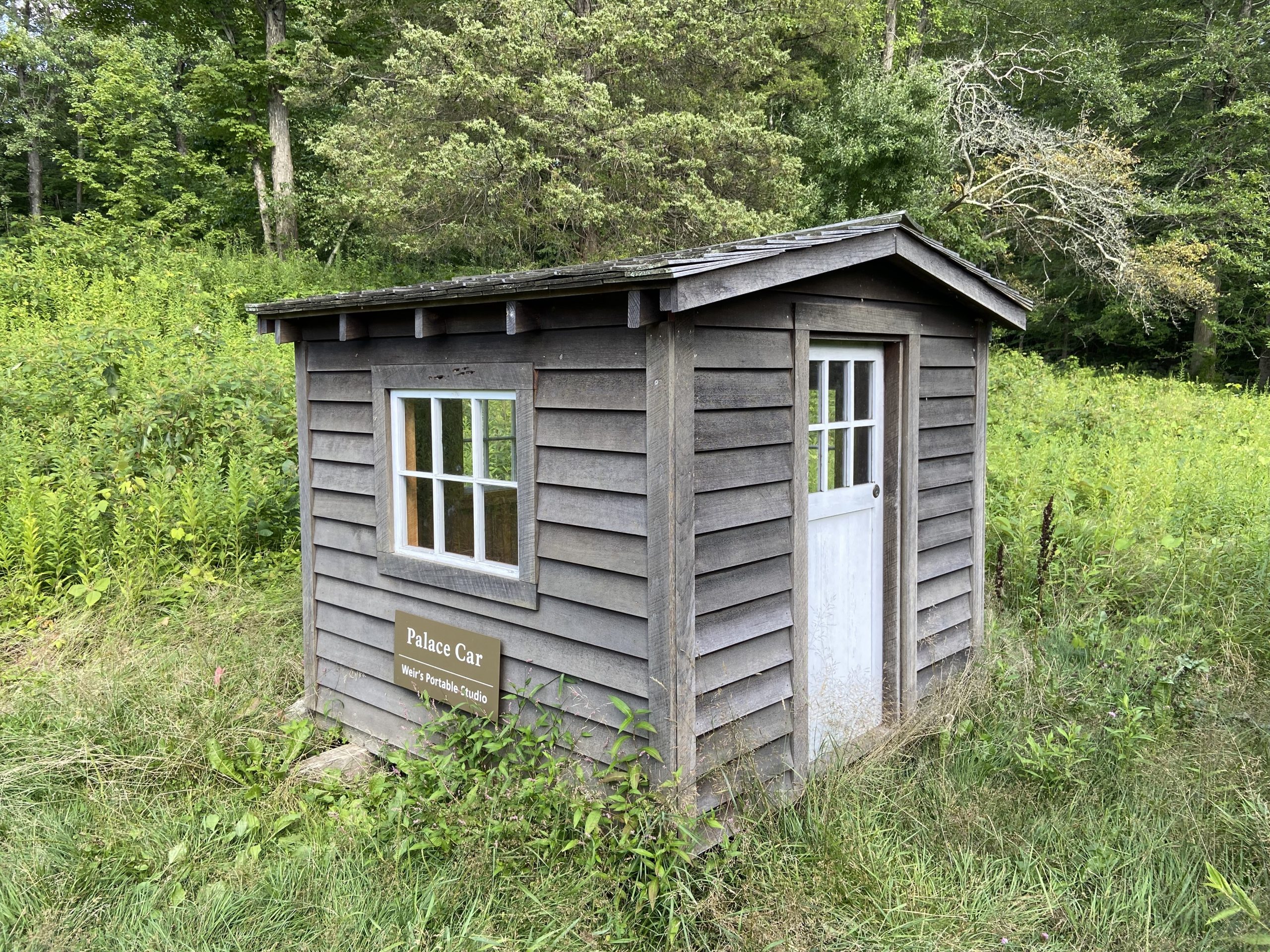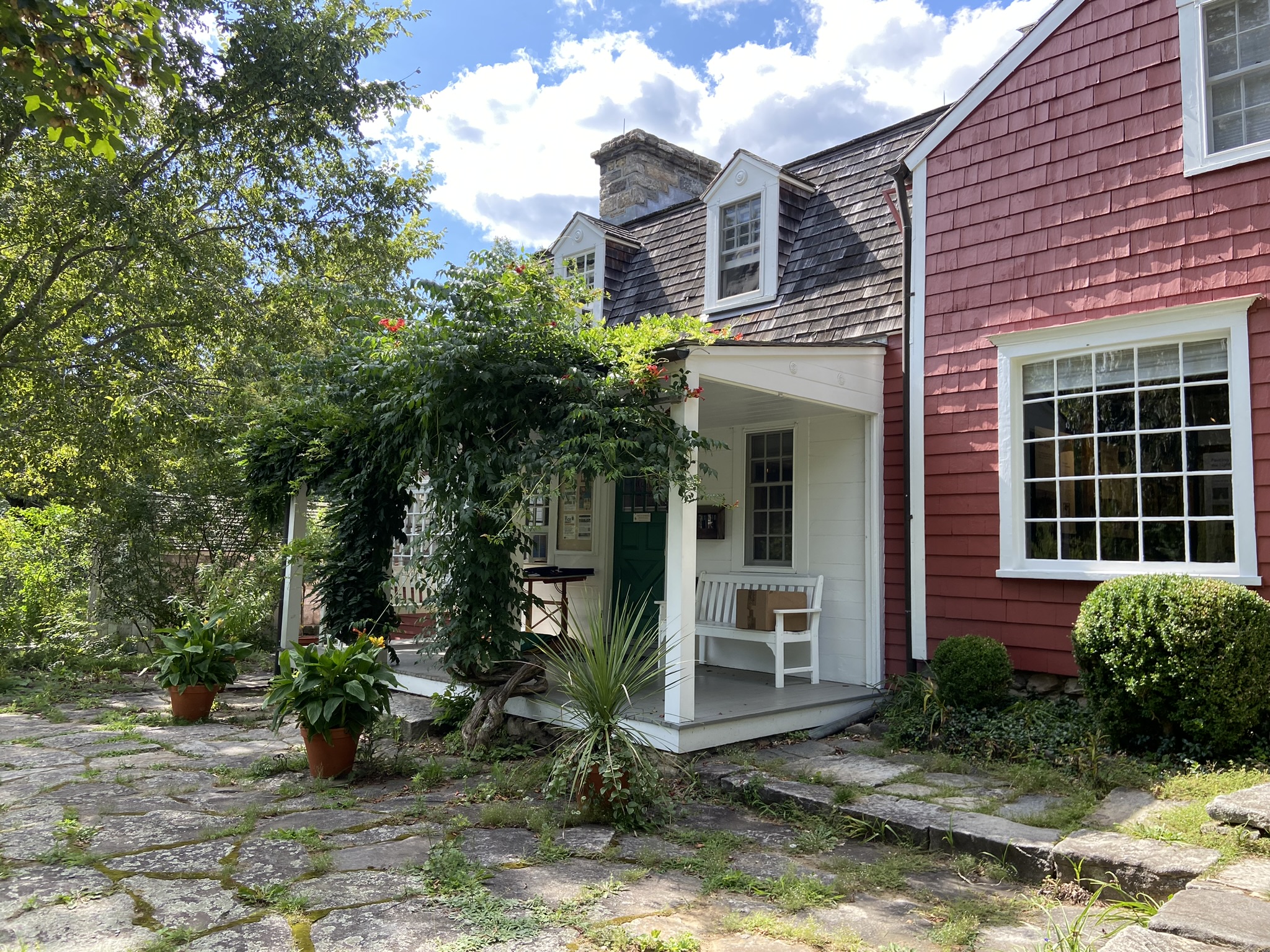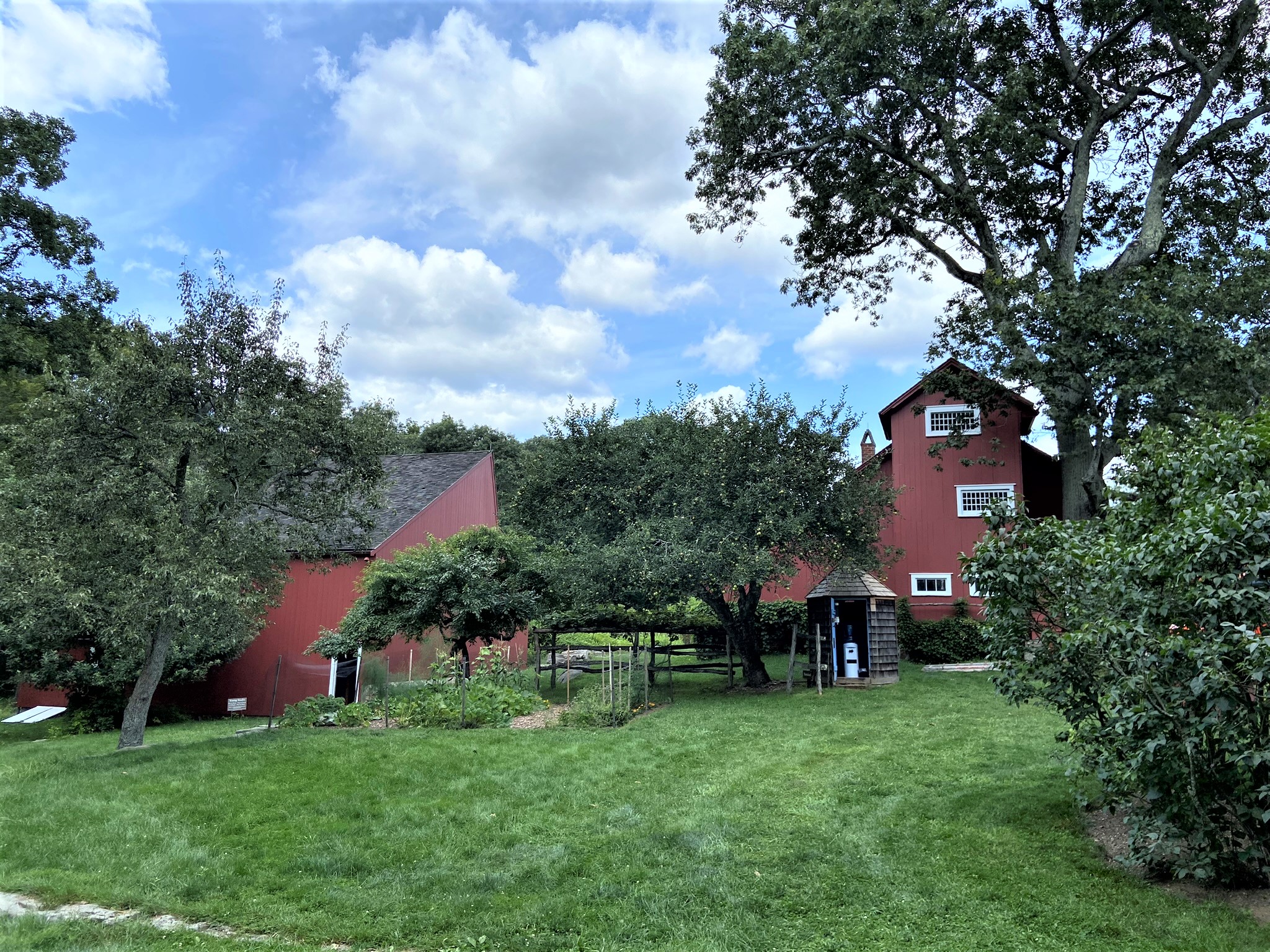All National Park Service sites are special, but Weir Farm National Historical Park in Wilton, Connecticut, has the distinction of being the only such site dedicated to American painting. This 68-acre “National Park for Art” includes the home and studio of American Impressionist painter Julian Alden Weir (1852–1919) as well as other buildings, barns, and gardens, and preserves the unique, gentle southern New England landscape that has inspired generations of artists. The park also tells the story of the artists and others who ensured the site’s survival despite suburban development. During a visit, people can learn about the three generations of artists who lived here, explore the grounds, and walk nearby trails. Weir Farm also supports artists and creativity, whether they are casual visitors who can pick up art supplies to capture the site’s beauty, artists who come to paint where Weir and others did, or the park’s artists-in-residence. It’s a mission Weir would approve.
The Story of Weir Farm
Julian Alden Weir, part of an artistic family, made his home in New York City, a center of the art world, and earned a living by painting portraits and teaching. In 1882, his purchase of a 153-acre property (later expanded to 238 acres) as a summer retreat and gentleman’s farm changed his life and influenced American art. The traditionally trained Weir disliked the innovative work of the French Impressionists at first, describing an 1877 show in Paris of their work as “worse than a Chamber of Horrors.” But by the early 1890s, the influence of colleagues and the natural beauty in and around his beloved farm led Weir to create more experimental works that showed scenes of daily life, and he became a leading figure in American Impressionism. He painted outdoors, used new perspectives and stylistic techniques such as visible brushstrokes, and tried mediums such as pastels and watercolor. Weir also invited other noted artists to visit and paint at the farm, including Childe Hassam, John Henry Twachtman, John Singer Sargent, and Albert Pinkham Ryder.
Dorothy Weir, Weir’s daughter and an artist herself, cared for the property after her father’s death in 1919. In 1931 she married sculptor Mahonri Young (1877–1957), who built his own studio at Weir Farm. The third generation of artists at Weir Farm was Sperry Andrews (1917–2005) and Doris Andrews (1920–2003), a couple who became friends with Mahonri Young and purchased the farm after Young’s death. Appreciating the site’s unique artistic legacy and concerned with its survival as development encroached, the Andrews, along with Cora Weir Burlingham (Weir’s youngest daughter) and others, worked to ensure that Weir Farm became a National Historic Site in 1990. In 2021, Weir Farm was redesignated a National Historical Park in recognition of the variety and significance of the site’s cultural and natural attractionsand in 2022 the park drew 38,000 visitors. It’s also part of the Connecticut Art Trail (as is the Florence Griswold Museum, another site related to Connecticut Impressionism) and a member of Historic Artists’ Homes and Studios.
Visiting Weir Farm
The grounds at Weir Farm are open daily year-round (brochures have self-guided tours), but the visitor center, Weir House, Weir Studio, and Young Studio are open seasonally from May through October (check the website for building hours). Fall is a lovely time to visit the red-painted buildings and leafy landscape, tucked away off smaller local roads; it’s best to use GPS or a navigational app.
A visit should start at the excellent modern, information-packed visitor center, the former Burlingham House. Besides displaying some original works and copies of paintings by artists who worked on-site, the center has panels about Impressionism and Julian Alden Weir, including his influential role in the art world of his day and in the Ten American Painters (or “The Ten”; the group exhibited together for several decades starting in 1898). Videos provide an introduction to the site, and there may be changing exhibits, such as this year’s one about William B. Carlin (1927–2014), grandson of Julian Alden Weir, who worked for decades to protect Weir Farm’s landscape.
Tours of the Weir House, which retains many original furnishings (some original paintings and copies are also displayed), discuss its artistic, comfortable furnishings, Weir’s family life, and the many artists who visited the home and painted with Weir. Nearby, the Weir Studio, built by Weir in 1885, contains many original frames, palettes, and decorative pieces that give a sense of the artist’s interests and working process. Also open in season is the Young Studio, where sculptor and artist Mahonri Young, a grandson of Mormon leader Brigham Young, created some of his most noted monumental works. On display are plaster casts from his This Is the Place monument (completed in 1947) in Salt Lake City, which honors Mormon pioneers.
Exploring the landscape and farm buildings that inspired Weir and others—the painting sites of more than 250 works of art have been identified at the park—is a key part of any visit. The Weir family’s gardens, such as the Sunken Garden and Secret Garden, deserve a look, as do the typical New England stone walls around the site, some older and some constructed by the Weirs. Also part of the park, Weir Pond was created by Weir for recreation and is accessible on a 1.2-mile loop trail. There’s more hiking in the adjacent Weir Preserve (10 trails on 110 acres) for those who want to immerse themselves in the landscape; an area trail map is available at the visitor center.
Art and the Community
Weir Farm today encourages the tradition of creativity and artistic experimentation that began here with Julian Alden Weir. The Take Part in Art program has components for all ages of the public and for beginning and established artists. Kids can earn a Junior Ranger badge on-site or virtually. Anyone can create art at the park year-round, bringing their own supplies or, in season, picking up free-to-use supplies at the visitor center. There’s also an annual Art in the Park Contest, festival, and online exhibit, with categories for different age and skill levels; submissions must be inspired by or made at the site. Art classes including Impressionist painting workshops are another option. Weir Farm’s website is informative and engaging, with information and resources for educators.
A new initiative, the Weir Farm Artist Collective, offers monthly meetings at which local artists of all skill levels can discuss ideas and share information. Weir Farm also runs, as do more than 50 other national parks, an Artist-in-Residence (AIR) Program. Each year six artists, chosen by a three-member jury, spend a month living and working in a house and studio on-site. The program aims to foster experimental new visual art. The AIR Program and others are supported by organizations who partner with Weir Farm, notably the Weir Farm Art Alliance and Friends of Weir Farm.
Linda Cabasin is a travel editor and writer who covered the globe at Fodor’s before taking up the freelance life. She’s a contributing editor at Fathom. Follow her on Instagram and X (formerly Twitter) at @lcabasin.
Featured Photo: The entrance sign for Weir Farm shows the park’s artistic focus. Photo by Mike Squires

